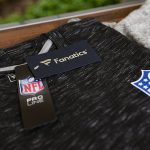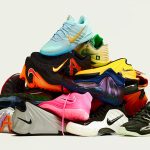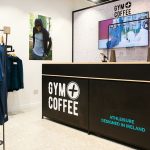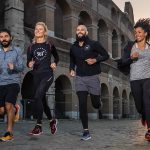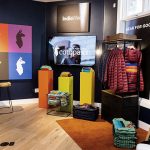With its powerful connection with young consumers, Under Armour believes it still has plenty of growth ahead. But given the economy, management is narrowing its focus to those areas that will bring the greatest return on investment.
“I think we feel very good about taking, for Under Armour, what in the past has been a top ten list that includes 12 or 13 items and limiting it down to the top four or five initiatives that we have for the company in a 2009 environment,” said Kevin Plank, Under Armour's chairman and CEO, speaking at the Goldman Sachs Retailing Conference last week. “And I think you're seeing us begin to prioritize that on our front-end initiatives, as well as demonstrating our ability to manage a pretty good business with the performance that we've put on the board at the end of the second quarter.”
Plank stressed that UA remains committed to growth in investing in talent and building its infrastructure. But on the sales side in the near term, the focus will be more on attempting to capitalize on “low-hanging fruit.”
For instance, an obvious growth area, according to Plank, is women's, which accounts for about a quarter of sales. The company has been building an infrastructure in women's since hiring Suzanne Karkusas as head of apparel more than 20 months ago and continues to see solid growth in the category.
“We're starting to see her influence not only on our men's but especially our women's line out in the market today where Under Armour has gone beyond the idea of a women's business being defined by shrinking it and pinking it but actually getting into color and flow and fit and sizing,” said Plank.
Another major opportunity remains with footwear, which is headed into its fourth year and now led by former Timberland, Reebok and Nike exec Gene McCarthy, with Gavin Ivester, formerly of Nike and Puma, heading up design and development.
Regarding the running footwear launch, Plank admitted that the company had made mistakes given its aggressive approach. Said Plank, “When we run fast, it means we're going make mistakes. And our promise to you is that they'll be full-speed mistakes but, more importantly, we'll never make the same mistake twice.”
He likewise said many of the fixes in running would be “no brainer” efforts. For instance, the one million unit launch of trainers in early 2008 included 47% of youth product. But the running launch earlier this year didn't include any youth offerings for a variety of reasons, including factory placement. Youth running product hit the market in July and has been seeing double-digit sell-through “everywhere that it's sold today,” Plank said.
Still, company President Dave McCreight said the company is “going to evaluate” the running footwear opportunity under its new footwear leadership. At the same time, it expects to show “material growth” in its other four footwear categories: baseball cleated, football cleated, slides and training. He said inventories in those categories are “all very clean and they are “cycling through training.” He expects to see some contraction in run as they stabilize the business and get the price value relationship in line.
Plank added that much of the brand's overall growth will come from additional products for its core 16-year-old athlete that continues to show strong brand strength. For example, graphic T-shirts have only recently become a focus.
“We own that demographic of not 12 to 24 but eight to 24 or, frankly, six to 24, that are saying, “I want more Under Armour.” We just haven't made product for them yet,” Plank said.
Management noted that the brand remains heavily under-distributed across retail, and was recently launched in mall specialty athletic chains. But Plank believes much of the brand's growth will continue to come in its core sporting goods accounts. For instance, he mentioned the opportunity in opening an in-store shop at an independent such as Lombardi's Sports in San Francisco, as well as opportunities with the big boxes.
“I think comp growth is what is most important, driving and building those relationships with our sporting goods partners, with the Dick's of the world and the Sports Authorities of the world, of not just taking more floor space and trading out a brand, but how do we help them as a brand come and deliver a point of view of how they should be thinking about the consumer that's walking in their stores,” said Plank.
Asked about the potential to capitalize on any upturn in business in the fourth quarter, McCreight said Under Armour's inventory levels will be able to support “some upside.” But he admitted that the company will be limited by turnaround times and could walk some sales, but sell-through and margins will improve.

